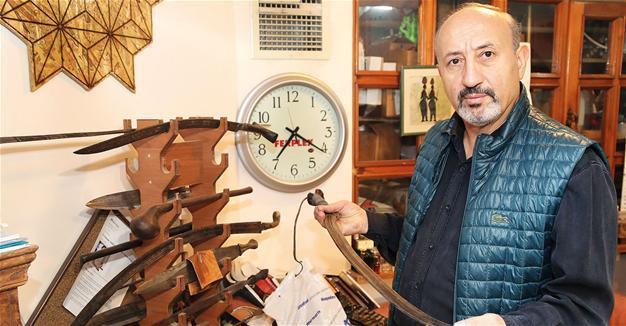Collections capture memory of Turkish society
ISTANBUL – Anadolu Agency
 Collector İrfan Yalın, who holds Turkey’s only tintype photography collection, says collections are the memory of society and light the path for future generations.
Collector İrfan Yalın, who holds Turkey’s only tintype photography collection, says collections are the memory of society and light the path for future generations. The vice chairman of the country’s Collectors Club, Yalın said his tintype photography collection includes around 1,500 photos taken between 1860 and 1880, including examples from the American Civil War.
He first developed a passion for collections by collecting documents on prison camps where Turks were seized in Egypt during World War I.
“I then started collecting objects from different parts of the world and learning their culture. I became an amateur historian. Being a collector means collecting simple objects, following other collections, visiting museums, knowing the history of culture, categorizing a collection and classifying it,” Yalın said.
“Everything can be collected. Not at first, but sometimes later you start making money. Most of them help you learn about a culture .... I have a walking stick owned by Sait Halim Pasha [1865–1921]. At that time, walking sticks were a source of dignity and this object reminds me of that era. I also have a pair of Ottoman-era shoes with a very elegant design, as beautiful as today’s designs. Each object has a different story,” he added.
Yalın also stated that some pieces in a collection could open doors to more scientific research and provided visual information about the past.
“That is why collecting is a nice habit that draws interest in every part of the world. Interest in collecting is increasing in our country too. As the Collectors Club, we are working particularly for middle and high-school students. We raise awareness for the protection of valuable objects in their house,” he said.
Interest in collecting on rise
Yalın said some of his friends had turned their collections into private museums.
“We have museums displaying things like sea shells or photography machines. Some people open a museum with sea culture tools only. But this is not enough. In Europe there are even pencil museums. Because pencils shed light on industrial history and reflect the political soul of a country. We need to reveal our richness with the contributions of the state and municipalities,” he added.
He said interest in the field of collecting had changed significantly over time, as people used to collect money or stamps 20 or 30 years ago but were now collecting things like precious stones, soda bottles, matchboxes, and sunglasses.
“People are able to collect through the Internet thanks to developing technology. I always say everyone should make use of old objects in their house. They should ask experts. For example, old Istanbul photos that we all have in our houses may be sold for incredible prices. A letter may gain incredible value as a resource.
Soda bottles produced in Istanbul are also very precious and can be sold even to museums,” Yalın added.
Yalın said many collectors liked to display their objects, but some with very rich collections in Turkey still had reservations.
“We worry about what will happen to our collections after we die. Collectors should record their collections, which is necessary to collect these objects,” he added.
















